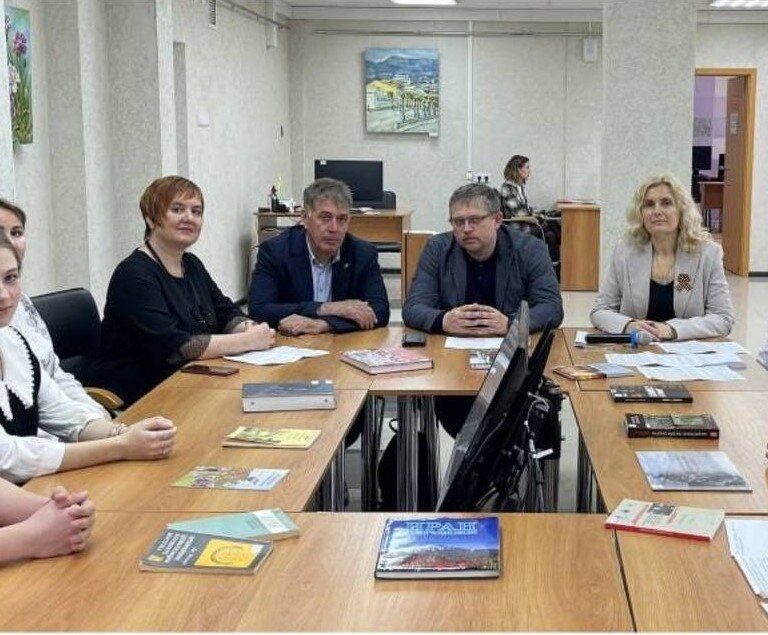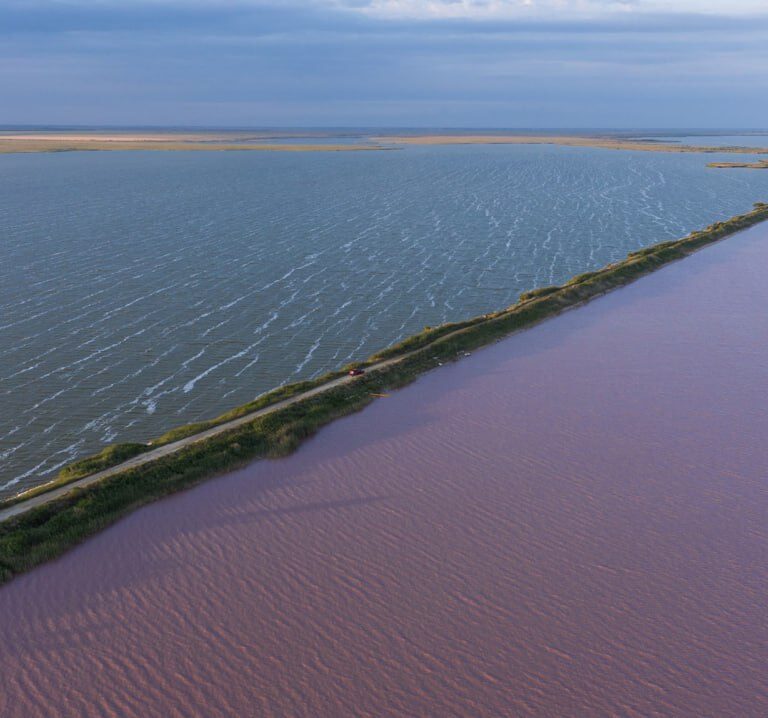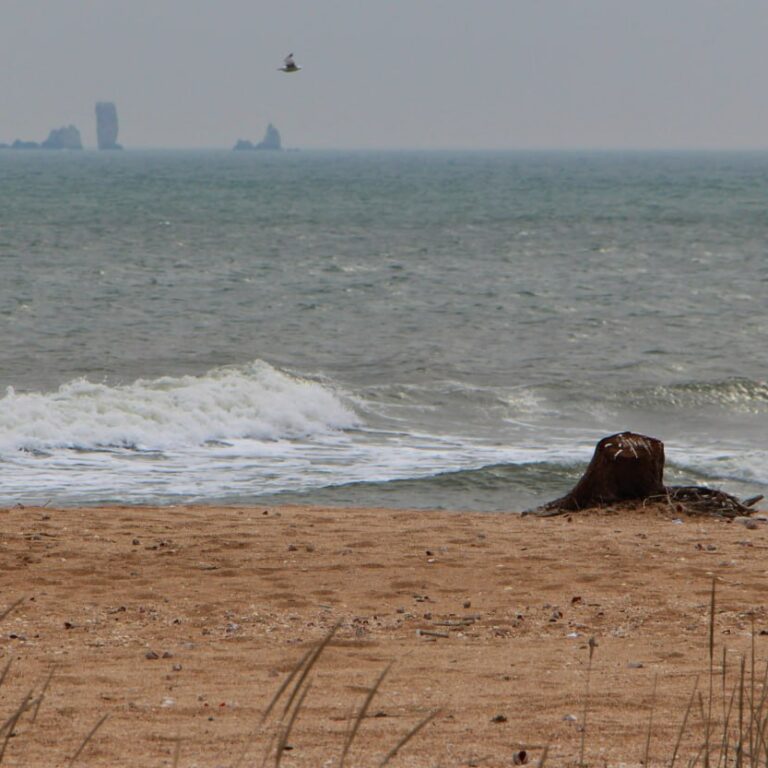On April 3, on the air of the independent Belarusian channel “Belsat”, the Votak program, an expert of the Association, Professor Babin, gave an interview to journalist Mikhail Pranovich regarding topical issues of the reintegration of Crimea.
Mikhail Pranovich (MP): We will discuss the plan for the de-occupation of Crimea in more detail with Borys Babin, an expert from the Association of Reintegration of Crimea.
MP: Tell me, among the 12 steps that were proposed by the National Security and Defense Council of Ukraine, this is the complete dismantling of the “Crimean Bridge”, the installation of the monument “Russian warship will go…” and the eviction of Russian citizens who arrived there after 2014.
Let’s talk about the last point in a little more detail, why this point was considered necessary, and will it somehow affect those Crimean residents who changed their Ukrainian passports to Russian ones during the occupation?
Boris Babin (BB): In fact, indeed, Mr. Danilov’s statement is very important, because it attracted a media response and we are well aware that a legal document is a somewhat different plane.
We have a de-occupation and reintegration strategy and an implementation plan. They were adopted before the large-scale Russian invasion, so they need to be revised. Right now the strategy is being revised, it is, in principle, largely an open document and a plan that the government should change.
So, just the project of changing the strategy should be changed by the NSDC apparatus subordinate to Mr. Danilov, and then it will be approved by the decision of this Council. Naturally, an important role should be given to at least demographic issues in the strategy.
A month ago, the forum “Future of Crimea” was held, which brought together experts available in Ukraine with practical experience in working on Crimea before the occupation, scientists, and public figures. And there proposals were developed, a systematic set of measures that should be taken into account in the new edition of the strategy.
In addition to the obvious situation that after February 24, 2022, the ways of de-occupation of Crimea will be different than before, and this is clear to everyone, a systematic approach was taken regarding what exactly and specifically the military administrations of Ukraine should do, the Ukrainian armed forces on the territory of Crimea, in the process and after the de-occupation, because we already perfectly understand that Crimea will be de-occupied, obviously, not only and not so much through diplomacy.
And in this context, indeed, the question of migrants that you asked is very important. There are 2 million people in the Crimea, also, according to various estimates, several hundred thousand people who illegally arrived from Russia since 2014.
What is the main problem here? These people have acquired a network of connections on the occupied peninsula, this applies to real estate, and family relations, and the joint de facto marital status, and so on.
Therefore, here the main approach of Ukraine after the start of the de-occupation, contained in these proposals of the forum, which we sent to the National Security and Defense Council, and to other authorized structures of Ukraine, is precisely the issue of accounting for persons.
The first issue that Ukraine will face is the registration of individuals who are on the territory of Crimea, their gradation, and, accordingly, the determination of whether they have the right to be on the occupied peninsula.
MP: Well, there will still be some kind of trial on whether a person can stay or not.
BB: Of course. Let’s take a situation, for example, of a child born in a mixed family, where there is a citizen of Ukraine. There will be a lot of such separate “thin” options. Of course, a significant part of the colonialists will not have any reason to live, they will be deported in the first place.
Moreover, here it needs to be done in compliance with the UN mechanisms in this area, and international organizations are very important here, Ukraine should already start working with the International Committee of the Red Cross, with the UN mission, with the fact that this process, and this, you see, is quite significant process, in terms of volume it should take place within the framework, namely, of standard human rights.
Also, it is necessary to understand that for the part of the persons who fall under the control of the Ukrainian troops in the Crimea, the requirements of the law of Geneva will also apply, since these will be persons in uniform, of a different nature, and, accordingly, there are standards for them regarding prisoners of war.
Naturally, Ukraine will comply with all this.
That is, according to our calculations, this process is quite long, and most importantly, at the very first stage, so that the aggressor state does not commit any provocations in this area, to do, I repeat, mass registration, a special separate register, which will be maintained with the obligation of all individuals, regardless of their status, register, first receive temporary documents, and then there is a check to what extent it is a citizen of Ukraine or not, and what rights they have to stay in Ukraine.
There will be not the most simple situations, for example, third-country nationals who lived or did not live in the Crimea until 2014. Also, individual representatives of the Crimean Tatar indigenous people who returned to Crimea from places of deportation in Central Asia after 2014.
That is, there will be very, very many specific moments, this is just a question for a comprehensive document of the state.
MP: Well, just, I still wanted to discuss, enough, such a specific moment, the “Crimean Bridge”, here is its complete dismantling, which was announced.
It is clear that the “Crimean Bridge” is the main symbol of the Russian occupation of the Crimea, but still, this is an extremely expensive project that was implemented at the expense of the Russians themselves, and this bridge, in general, is a useful thing.
Why dismantle it and spend a lot of money on it, if you could take it as, for example, a “war trophy” and use it for your own purposes.
BB: Well, the most difficult question in this situation is what will happen on the territory on the other side of the Kerch Strait. Ukraine today is far from the idea that there will be a democratic, civilized state, where bridges are needed, with which cooperation is necessary, and there is such a rather serious “risk” …
Well, it’s not a “risk” rather, the situation is that after the Ukrainian victory, in the territories of the current Russian Federation, the processes of self-determination of states, the emergence of various new formations, and with whom Ukraine will border on the Sea of Azov, through the Kerch Strait, can begin, respectively, today, frankly, it’s not clear.
It is possible that a certain [aggressive] regime will continue in Russia, and all these conditions make, to put it mildly, strange the presence of a bridge crossing to the other side. In addition, this bridge, firstly, harms navigation, and an unconditional factor that must be taken into account is the need to ensure navigation through the Sea of Azov.
And here it is not only the interests of Ukraine, it is also the interests of, for example, the Caspian countries that have no other outlet to the World Ocean, such as Kazakhstan, Azerbaijan, Turkmenistan. And no one asked them when this bridge was built, frankly.
In addition, in fact, to be honest, this bridge was built quite hastily, and it contains a fairly large number of design errors, well, it’s clear that billions were written off during its construction in favor of the Rottenberg clan, but I’m talking about something else.
It is simply technically, rather dangerous, and in this case, I repeat, this facility is not safe, and neither logistically nor technically it matters to Ukraine.
MP: Thank you very much, Boris, for your comment, for taking the time to join us.







